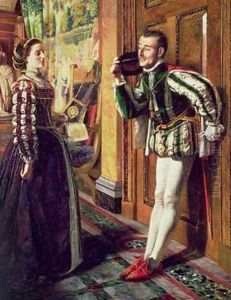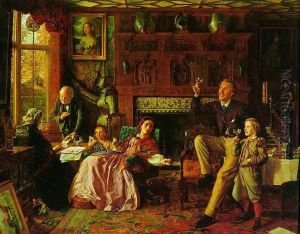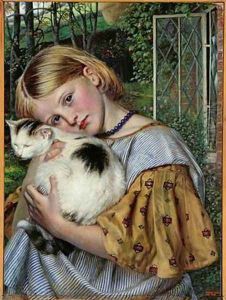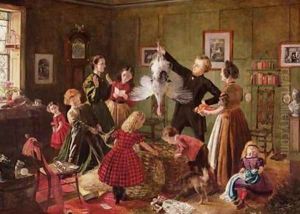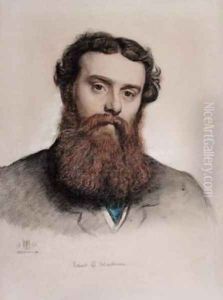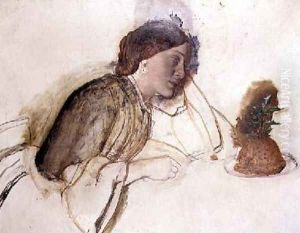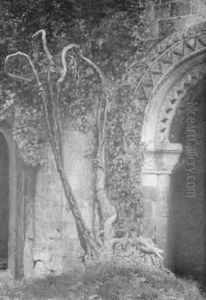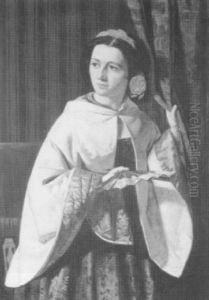Robert Braithwaite Martineau Paintings
Robert Braithwaite Martineau was an English painter associated with the Pre-Raphaelite Brotherhood and known for his detailed and highly moralistic works. Born on January 19, 1826, in London, Martineau was not initially destined for a career in the arts; he began his professional life as an articled clerk to a solicitor. However, his passion for painting prevailed, and he left his position to pursue art full-time, enrolling at the Royal Academy Schools in 1849.
Martineau was greatly influenced by the Pre-Raphaelite movement, which sought to reject the Mannerist influence that dominated after Raphael and Michelangelo, emphasizing a return to rich detail, vibrant colors, and complex compositions. Though not an official member of the Brotherhood, his work reflects the Pre-Raphaelite principles of truth to nature and moral or social themes. He became close friends with several members, including John Everett Millais and William Holman Hunt, who both had a significant impact on his artistic development.
His career was sadly short-lived. Martineau's most notable works include 'The Last Day in the Old Home' (1862), which depicts a family that has fallen into financial ruin, and 'Kit's Writing Lesson' (1852), reflecting Victorian values of education and domestic life. These paintings are characterized by their meticulous attention to detail and their use of narrative to address the social issues of the day.
Despite the promise shown in his work, Martineau's career was cut short by his deteriorating health. He suffered from tuberculosis, which plagued him for many years. His condition meant that he produced a relatively small body of work before his premature death on February 13, 1869, at the age of 43. Today, Martineau's paintings can be found in the collections of various British institutions, including the Tate Gallery and the Victoria and Albert Museum, serving as a testament to his talent and his contributions to the Victorian art scene.
